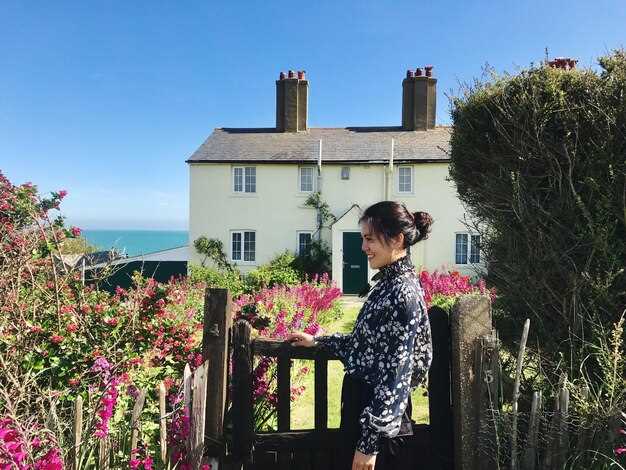
Start with Bayeux (bayeux) in the morning: wander cobbled lanes, admire the Bayeux Tapestry, and sample the local food, such as camembert, apple tart, and cider. This first stop gives a calm, quite village vibe and a solid sense of Normandy’s history without rush.
From Bayeux, head to Étretat for nature on the coast. The chalk cliffs and sea arches rise dramatically, and the beaches here invite quiet exploration. Paths are covered with gravel and greenery, letting you move smoothly from cliff outlooks to the shoreline, with running paths along the top for a brisk option.
Impressionists and visitors are drawn to Honfleur by a harbor that still feeds art and cuisine, quite captivating. The riverfront sides are lined with antique shops, bistros, and galleries. Take a short stroll in the morning light, then sit at a quay café to savor seafood and cider while the boats slip by.
The D-Day beaches offer a powerful shift in perspective. A second stop at Omaha Beach or Juno Beach gives you a sense of the coastline’s scale, and the museums near Arromanches present concise displays. You can drive along the shore to Pointe du Hoc for dramatic sea views.
For a practical coastal base, barneville-carteret puts you within reach of long sandy shores and small fishing villages. Stay in a clifftop guesthouse, enjoy a morning walk along the water, and visit local markets for antique finds and fresh seafood. Organizing day trips from barneville-carteret keeps your schedule flexible and lets you discover nature, villages, and beaches at your own rhythm.
Practical guide to Normandy’s highlights
Begin on the road to mont Saint-Michel at first light; this world-famous site sits on a rocky islet and delivers an impressive silhouette as the tide moves. Cross the causeway, explore the abbey’s cloisters, and stroll the ramparts to feel the medieval energy without rushing the visit.
In Bayeux, the old-world charm shines through in the town commons and cobbled lanes. The Bayeux embroidery, housed in a dedicated room, covers centuries of Norman history and remains a must-see. Speak with a guide to pick out details that match your interests, from medieval craft to local life.
On the mainland coast, these places run along a calm road with small harbours. Museums around Caen and Arromanches tell the wartime story clearly; some artifacts buried in hedgerows were later discovered by local volunteers, adding a human touch to the history. The area offers a friendly pace for families, and the coastal paths deliver impressive views of cliffs and sea. For visitors with different interests, the exhibits cover military, maritime, and agricultural life, while cafés along the promenade serve a light lunch.
Nearest, Centre Claude Monet in Giverny invites you to speak with curators about claude and his approach to light. The centre is compact, making it easy to develop a personal route, and the gardens invite slow exploration along the water and bridges. A local guide can point out the plantings that inspired his palette, while nearby shops offer butter and milk-based treats.
To wrap your day, pick a couple of spots aligned with your interests to avoid rush. This flexible plan is easy to adjust on the road; if weather shifts, you can switch to inland museums or a seaside village. If you worry about time, remember you can still enjoy the region with a friendly attitude and locals who speak English and French, making every stop feel simple and enjoyable. The stops around markets and commons give you quick souvenirs, and a classic local treat is a fresh crepe or a cheese-stuffed galette using local milk. It’s not impossible to fit these highlights into a two-day loop if you start early and keep a light plan.
Mont-Saint-Michel: Best time to visit, tides, and avoid crowds
Plan to visit at sunrise or late afternoon in May or September to enjoy calm paths, softer light, and thinner crowds, then cross the causeway when the bay is quiet enough to feel unpretentious and intimate.
The tides shape every visit. Spring tides can produce a difference of about 14–15 meters between low and high water, turning the bay into a dramatic, moving canvas. On most days the intertidal window is 2–3 hours, so check tide tables, arrive early, and allow a buffer for safety. If youve timed it right, you can see the island ringed by water during high tide and still have time to explore the ramparts before the crowds return.
To avoid crowds, buy abbey tickets online, choose midweek slots, and target hours just after opening or before closing. Start with the upper viewpoints for sweeping panoramas, then wander the narrow streets that run through the village–the parts feel unhurried, and the wooden storefronts add a country, small-town vibe to the visit. Some tours offer concise, informative notes that feel practical rather than grandiose, which helps you stay focused on the second half of the day.
For a broader coastal day, add detretat to your plan and compare the falaises with Mont-Saint-Michel’s mass and towers. The detretat falaises offer stark white cliffs and sea arches, and you can view them from unpretentious viewpoints along the coast. If you’ve got time, pick some nearby villages for short trips that reveal local craft, markets, and seaside walks–each stop adds texture to the overall experience without rushing you through the bay.
Practical notes: some tips are by-sa licensed for sharing, so you can spread insights and photos with others. If you choose guided routes, follow marked paths and respect tide warnings and access times; the bay can shift quickly and the landings history nearby adds a sober, interesting layer to the visit. With careful planning, Mont-Saint-Michel becomes a time-honored, able itinerary that stays focused, informative, and genuinely memorable.
Étretat Cliffs: How to reach, where to park, and the best photo spots
Park at Parking des Falaises and start along the cliff-top paths for your first shot, then loop back via the village for a full view of the arches and needles.
How to reach
- By car: From Caen or Le Havre, take the D940 toward Étretat and follow signs to the Falaises parking. The lot sits at the base of the cliffs, with direct access to the main viewpoints.
- By train and bus: Take a regional train to Le Havre or Fécamp, then a short bus to Étretat; from the stop, follow the coastal paths to the viewpoints.
- From england: A common plan is to ship into Le Havre or Caen, then drive along the coast; combine this with a day trip to lyons-la-foret for a varied Norman experience.
Nearby and practical notes
- Weather and walking: Much of the best scenery sits along uphill sections and uneven paths; wear sturdy shoes and bring a light jacket.
- COVID and crowds: Though covid restrictions are in the past, crowds peak around midday and during sunny weekends; aim for dawn or late afternoon to keep crowds down.
- Interactive aspects: Information panels along the routes give historical context and organize a gentle, self-guided tour of the cliffs.
- Food and refreshment: Expect snack bars and small eateries near the village; you can grab cooked dishes or warm drinks to enjoy on the rocks.
Where to park
- Parking des Falaises: This paid option sits closest to the cliff paths and offers rapid access to the upper viewpoints. Arrive early to secure a spot and avoid the midday heat and crowds.
- Village access lots: A second option lies near the center of Étretat; a 15–20 minute walk along a gradual path brings you to the first overlook, with easier uphill sections but longer approach.
- Timing tip: Tides and lighting shift the scene, so plan a loop that includes both the upper deck and the beach below to maximize photo opportunities.
Best photo spots
- Top arch view (Manneporte) from the northeast cliff path: capture the bridge-like arch with the sea stretching beyond; sunrise light highlights the white chalk and creates a dramatic silhouette.
- Pointe L’Aiguille and the Porte d’Amont: shoot from the uphill path to frame the slender rock needle against a pale sky; best with a telephoto compressing distance and highlighting the scale.
- Lower coast and the Porte d’Aval: walk down toward the pebble beach at low tide to include the natural arch with waves crashing beneath; check tide tables to avoid getting trapped on the wrong side of the rocks.
- Cliff-top panorama near the eastern ledge: a full-angle shot that includes the sea, the arches, and the cliffline–ideal for captioning that notes the site is world-famous and among the most photographed on the coast.
- Along the beach between rock stacks: capture reflective water and the cliffs in the background; this angle is popular with painters and photographers alike, offering a quieter moment away from the crowds.
Tips for a fully satisfying visit
- Organizing: set a two-stop plan–start with the upper viewpoints at sunrise, then descend for shoreline shots as the light shifts.
- Time management: allocate 1.5–2 hours for the cliff-top circuit and another 30–40 minutes for the beach approach, leaving room for a short stroll in the village to taste seafood or baked goods.
- Nearby to enrich the day: extend the trip with a detour to lyons-la-foret, a historic village with timbered houses and scenic lanes; it pairs well with Étretat for a broader Normandy experience.
- Historical context: the cliffs and coastal paths sit among memorials and museums in the nearby area; a quick stop provides context to the long-standing coastal history.
- Narrative ideas: mention how the chalk cliffs have inspired paintings and attracted visitors from england and across europe, reinforcing the site’s world-famous status.
Bayeux: Tapestry viewing tips, museum hours, and ticket options
Buy a timed-entry online ticket to guarantee entry and skip the line. planning ahead lets you pick a slot that fits your day, and you can regularly check the official offer for changes.
Looking closely at the embroidery, you’ll see the details come alive at a comfortable pace; arrive 10–15 minutes before your slot; follow the marked route; the space preserves an old-world atmosphere; budget 60–75 minutes to study the scenes and enjoy the textures; afterward, step into the garden for photos, where lilies catch the light and create heavenly moments, and the setting looks gorgeous.
Museum hours typically run 9:30–18:00 daily, with last admission around 17:15; in winter hours shift earlier, often closing at 17:00; check the official site for seasonal changes and occasional closures.
Ticket options: Standard ticket covers access to the textile display; price around 12–14 EUR; reduced rates apply to students, seniors, and under-18s; a family package adds benefit if you’re visiting with kids; you’re able to combine with nearby sights to maximize value; the admissions department notes that children under 7 enter free; guided audio options are available for an extra fee.
From caen or mont, the drive to Bayeux is about 25 miles; parking is available near the town center; driving is straightforward and convenient for a half-day plan; after viewing, a tasting of local cider and cheeses nearby makes a heavenly finish; the experience offers incredible memories and outstanding old-world charm that many travelers look for right away.
Rouen: Walking routes, cathedral hours, and dining near the historic center

Start with a 3 km walking route that begins at the Gros-Horloge arch, threads through Rouen’s historic center, climbs toward the cathedral precinct, and finishes along the Seine shore. The cathedral sits on a rock-like outcrop. An area beyond the cathedral follows the riverbank, offering views of the quay and the limestone façades across the water. Along the way you’ll see the cathedral’s rock-faced façade, the lively sides of medieval houses, and a string of sights around the market square. If youve visited before, you know how the flows of tourists concentrate around lunch and the riverfront; this route is scaled for a relaxed pace and offers ample time for photos and personal pauses.
Cathedral hours vary by season, but the Notre-Dame de Rouen doors are typically open from early morning to late afternoon, with extended hours on sunny days. Inside, the nave fills with light, and the crypts underneath the nave offer a quieter perspective on the building’s history. If you want extra context, ask at the information desk about an organized tour of the organ loft and the Gothic chapels.
Dining near the historic center centers on La Couronne, a landmark near the market that offers traditional Norman dishes and tasting menus; reservations are wise on weekends. For a lighter option, several casual bistros along the Gros-Horloge area provide quick tastings and local cider. When organizing your time, consider seating arrangements that suit a personal pace–you may prefer a window table for the river view while you sample some regional cheese and bread.
Beyond the cathedral, the Seine shore, and the museum cluster, Rouen reveals interesting contrasts: a lively flow of tourists and locals, a department full of heritage, and pockets where england-bound visitors mingle. Rouen isn’t a beach town, but the Seine shore offers a breezy, beach-like vibe on sunny days. laura, a local guide, and victor, a restaurant host, often organize small group walks that highlight overlooked corners. theres always something to see, from the arcades along the old market to the Gros-Horloge clock tower, and plenty of opportunities to sample the local flavors on your tongue. There are options for all budgets, including quick tasting stops and longer meals with a proper tasting menu. The day ends with a quiet stroll underneath the cathedral arches, where you can reflect on what youve learned and plan your next Rouen visit.
Honfleur: Harbor stroll, art galleries, and family-friendly stops

Begin with a harbor stroll along the Vieux Bassin to catch bright light on the boats and snap photos–this makes a vivid opener for your Honfleur day.
Park near the quay or book a central hôtel with easy access to the harbor; planning ahead keeps buffers for weather and lets you enjoy the pace. In the galleries and museums, pick 2 favorites to anchor the visit, and let the rest be flexible so you can return if something resonates. The spaces are intimate, which makes it easy to connect and take your time, and they take care to present works that fellow visitors can discuss together.
For families, Naturospace offers an enjoyable break from art and a chance to see tropical butterflies up close. The indoor space feels comfortable on wetter days, and a nearby park provides a quick run for kids between stops. Buses run on a reliable schedule and uniforms help you spot guides who can answer quick questions, making it easier to keep everyone in sync.
If youre planning a longer route that includes Tourouvre, Honfleur makes a bright coastal stop en route. A short mont climb behind the town yields a high vantage on the harbor and the sides of the harbor-side houses dotted along the quay. The inner lanes reveal cozy cafés where you can savor a crepe or a warm drink that feels personal and welcoming, and which nearly always leaves you with a longer, happier memory of the day.
To help you visualize the day, here are practical picks in a quick table.
| Spot | What to do | Best time | Family tip |
|---|---|---|---|
| Vieux Bassin harbor | Harbor stroll, photos, bright views | Morning | Stroll the quay with kids; watch the boats up close |
| Eugène Boudin Museum & local galleries | Seascapes, intimate spaces with local favorites | Afternoon | Choose 2 favorites, take turns selecting each space |
| Naturospace | Indoor tropical butterflies and a calm break | Midday | Great on rainy days; stroller-friendly paths |
| mont viewpoint | High overlook of harbor and town sides | Late afternoon | Expect softer light; perfect for family photos |
